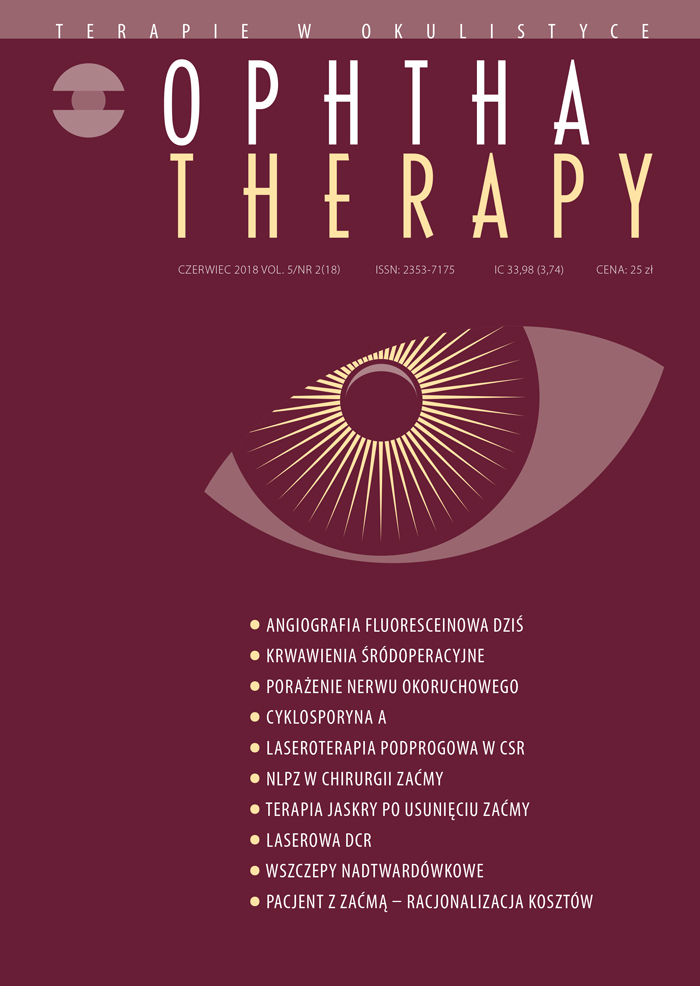Oculomotor nerve palsy secondary to internal carotid artery aneurysm – a case report
Main Article Content
Abstract
The authors present a case of a 48-year-old woman with nonspecific headaches followed by right eye ptosis, motility limitation, enlarged pupil and diplopia. The patient presented no other systemic diseases. In the family history, death of father and sister at an early age was stated for an unknown reason. In the neurological and ophthalmological examination, the right oculomotor nerve palsy was revealed. Computed tomography and magnetic resonance angiography confirmed the presence of the aneurysm of the right internal carotid artery. The patient underwent an endovascular procedure – aneurysm coiling. The authors review literature in the subject of oculomotor nerve palsy and intracranial aneurysms.
Downloads
Article Details

This work is licensed under a Creative Commons Attribution-NonCommercial-NoDerivatives 4.0 International License.
Copyright: © Medical Education sp. z o.o. License allowing third parties to copy and redistribute the material in any medium or format and to remix, transform, and build upon the material, provided the original work is properly cited and states its license.
Address reprint requests to: Medical Education, Marcin Kuźma (marcin.kuzma@mededu.pl)
References
2. Kline LB, Foroozan R. Neuro-ophthalmology review manual. Wyd. 7, Slack New York 2013: 90.
3. Liu G, Volpe N, Galetta S. Neuro-ophthalmology: diagnosis and management. Wyd. 2, Elsevier Inc Saunders 2010: 512.
4. Brown RD Jr, Broderick JP. Unruptured intracranial aneurysms: epidemiology, natural history, management options, and familial screening. Lancet Neurol. 2014; 13(4): 393-404.
5. Ajiboye N, Chalouhi N, Starke RM et al. Unruptured Cerebral Aneurysms: Evaluation and Management. ScientificWorldJournal. 2015; 2015: 954954.
6. Chen X, Liu Y, Tong H et al. Meta-analysis of computed tomography angiography versus magnetic resonance angiography for intracranial aneurysm. Medicine (Baltimore). 2018; 97(20): e10771.
7. Kański J, Bowling B. Okulistyka kliniczna. Wyd. 4, Elsevier Urban & Partner, Wrocław 2013: 833-5.
8. Williams LN, Brown Jr RD. Management of unruptured intracranial aneurysms. Neurol Clin Pract. 2013; 3(2): 99-108.
9. Zheng F, Dong Y, Xia P et al. Is clipping better than coiling in the treatment of patients with oculomotor nerve palsies induced by posterior communicating artery aneurysms? A systematic review and meta-analysis. Clin Neurol Neurosurg. 2017; 153: 20-6.
10. Hall S, Sadek AR, Dando A et al. The Resolution of oculomotor nerve palsy caused by unruptured posterior communicating artery aneurysms: a cohort study and narrative review. World Neurosurg. 2017; 107: 581-7.

